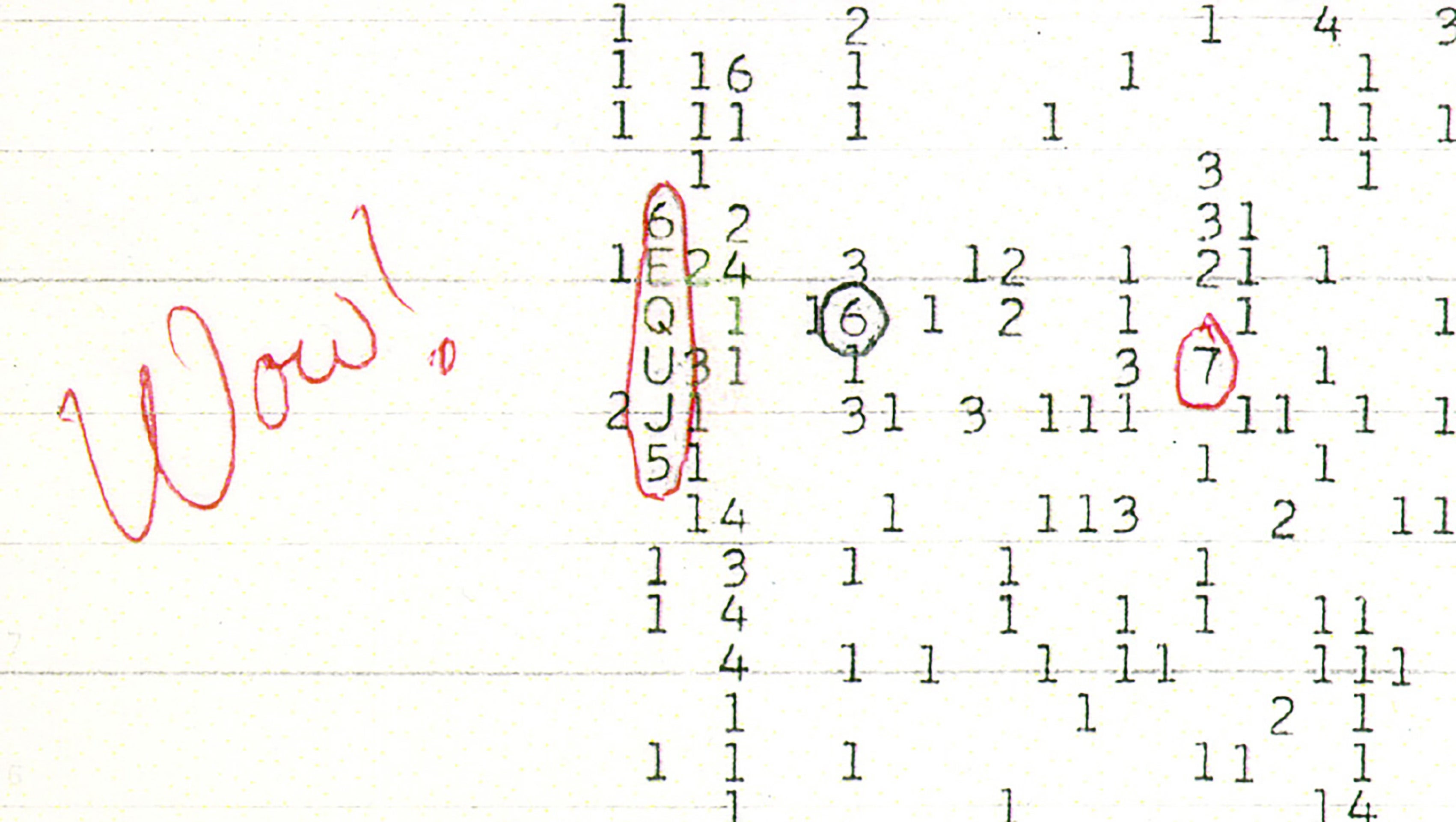The WOW signal! NASA finally decrypted it`s and answer is not what we expected..

In 1977, astronomers detected a powerful and mysterious radio signal coming from the constellation Sagittarius, named the “Wow! Signal.” The signal matched the frequency of neutral hydrogen, a key element in the search for extraterrestrial life. Ohio State University’s Big Ear telescope detected this signal, which lasted for 72 seconds and has fascinated scientists ever since.

Recent research suggests the Wow! Signal could have been caused by a rare natural event, like a magnetar flare or gamma-ray burst, rather than extraterrestrial communication. This theory is based on data from the Arecibo telescope, which found signals similar to the Wow! Signal but less intense and originating from multiple sources.
Meanwhile, NASA’s Voyager 1, launched in 1977, continues its journey through interstellar space, sending back scientific data. Despite its age, Voyager 1 encountered a recent issue where its signals became erratic, puzzling NASA engineers. The spacecraft remains functional, but scientists are working to resolve the mysterious glitch.
Lastly, a separate radio signal, discovered in 2018 by an Australian student, has also sparked interest. This signal repeats every 18 minutes but mysteriously vanished after a few months, leaving researchers searching for answers.

The mystery surrounding these cosmic signals and extraterrestrial phenomena is captivating, as it delves into the unknown aspects of our universe. Natasha and her team discovered radio signals that have been beaming toward Earth for 35 years. These signals, first detected in 1988 but lost amidst other data, reappeared and piqued the curiosity of space explorers. Through meticulous analysis, they calculated that the source is 15,000 light years away, yet its exact nature remains elusive.
Initially, Walker and his team compared the signals to known space phenomena, such as pulsars and magnetars. Pulsars, neutron stars that emit regular beams of energy, seemed like a potential source, but their behavior didn’t match. Magnetars, with their powerful magnetic fields, were also ruled out due to the absence of X-ray emissions.
Theories shifted toward more unusual possibilities, like a dwarf pulsar—a denser white dwarf emitting periodic light flashes. Although closer to the truth, the signal’s 22-minute interval still doesn’t fully align with known behaviors. The team remains open to further possibilities, leaving room for the discovery of a new space object or natural phenomenon.
The exploration of fast radio bursts (FRBs) adds another layer of intrigue. These powerful, brief signals, occurring around 10,000 times a day, could originate from magnetars, colliding stars, or other intense cosmic events. Despite their energy, they likely have natural causes, though they offer a glimpse into the vastness and complexity of space.
Among all these theories, some suggest the potential for extraterrestrial intelligence, with parallels drawn to historical signals like the *Wow!* signal in 1977. Proxima Centauri, the closest star to our solar system, presents a fascinating case, with scientists detecting a possible artificial signal from Proxima Centauri b, a planet in the star’s habitable zone.
While excitement grows around the possibility of discovering extraterrestrial life, the reality is tempered by the vast distances and limitations of current technology. Whether it’s signals from distant stars, pulsars, or even radio noise from ancient civilizations, the quest to understand the universe is far from over, and every discovery brings us one step closer to unlocking its secrets.
It sounds like you’re working on a detailed science narrative, blending discoveries about deep-sea life with the exploration of outer space. The plot seems to follow a scientist who is thrust into the spotlight after a groundbreaking discovery related to alien life, only to later realize the sound came from natural planetary phenomena, not extraterrestrial sources.
The narrative touches on various scientific concepts such as extremophiles, the potential for life on moons like Ganymede and Europa, and even the complexities of dark matter and space exploration. Would you like help developing any specific sections or improving the flow of the storyline?
extraterrestrial life. As we continue to explore the cosmos, signals like the Wow signal remind us that the universe holds many mysteries. While we may not yet fully understand the source of that famous 72-second blip, it encourages scientists and astronomers to keep listening and searching for other potential signs of intelligence beyond our planet.
In our vast universe, the possibilities are endless. Whether it’s unusual radio bursts, unidentified signals, or distant planets orbiting stars similar to our own, humanity’s curiosity drives the ongoing quest to unlock the secrets of space.
In the mid-20th century, UFOs were making waves in headlines across America, leading to significant interest and action from authorities. The U.S. Air Force launched multiple initiatives, such as Project Sign and Project Grudge, to investigate the phenomenon. These were soon followed by the more well-known *Project Blue Book*, which ran from 1951 to 1969. Initiated by Major General Charles P. Cabell, the program aimed to analyze UFO reports, eventually gathering over 12,600 sightings. While most were attributed to natural causes, some reports remained unresolved due to insufficient data.
Despite officially closing Project Blue Book in 1969, the U.S. government’s interest in UFOs did not fade. In December 2017, it was revealed that they had secretly funded another research program known as the *Advanced Aviation Threat Identification Program* (AAATIP) in the late 2000s.
This program, started in 2007, allocated around $22 million over four years to study UFO phenomena, likely spurred by the infamous 2004 Tic Tac UFO incident where U.S. Air Force pilots observed mysterious flying objects off California’s coast. These objects defied conventional physics, moving erratically at high speeds, which prompted further investigation into their origin and potential threat.
AAATIP explored some highly speculative and advanced fields of research, such as wormholes, warp drives, and invisibility cloaking. These studies received significant funding, although the results and reasoning behind selecting these research areas remain largely unknown.
Some suggest these technologies could help extraterrestrial civilizations travel to Earth, but others criticize the substantial government spending on what they consider fringe science. Despite the program officially ending in 2012, questions and theories continue to swirl around the U.S. government’s enduring interest in UFOs.








